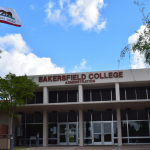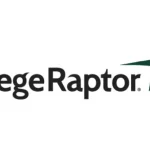With FAFSA completions down over 16% over the past year, colleges are taking innovative steps to respond. And with so many things in life, when you face a big challenge, all options should be on the table.
At Ocelot, we have have built the “FAFSA Engagement Framework” – a holistic approach that values Outreach (Connection), Support, and Education – to aid higher education institutions in promoting FAFSA completions.
Newer technologies such as machine learning, artificial intelligence, and predictive analytics are emerging as constructive elements that are part of this framework.
Proactive Outreach (Connection)
Colleges and universities improve student engagement when they invest in proactive outreach. It is important to meet students where they are and this outreach can take many forms. In years past, it could have been printed brochures or handbooks. Then came e-mail and later web-based technologies such as online video.
Today, there are several new AI-based technologies that can be blended with traditional tactics to create a scalable, effective, high-touch, and personalized outreach program.
AI-powered Texting Campaigns
Reaching students on their cell phones via text is an absolute must in this day and age. If a student is willing to communicate via this channel, it is a great opportunity to engage on the terms they prefer. AI-powered Campaigns are a way to scale engagement via texting, while at the same time using AI to provide appropriate follow-up messaging to remind students of deadlines, guide them to the appropriate services and support, poll them, etc. This approach provides students with quick and personalized communication, which is a best practice for engagement and ultimately enrollment and retention.
Predictive Analytics
Knowing when to reach out to a prospective student who is stuck within the enrollment process or a current student who is struggling or is disengaged can be the difference between that prospect becoming a student or that student not persisting with their educational journey. Using data from virtual or AI-assisted interactions helps inform where to prioritize staff time and attention. It also makes for greater efficiency and better enrollment success. To maximize effectiveness, it is important that data not be siloed. Information needs to be shared across systems to create a unified, student-centered experience.
24/7 Support and Self-Service
AI-enabled Live Chat
AI-enabled Live Chat is a new technology that supports administrators and live chat agents with suggested answers to live chat questions. The technology supports the goals of consistency with answers as well as providing administrators with quick and easy access to relevant materials such as guides, videos, etc. These can provide a student with immediate and supplemental assistance with navigating an issue in real time.
AI-powered Chatbots
When an administrator is not available to respond to a student through Live Chat, an AI-powered chatbot can shoulder the load on Tier 1 and some Tier 2 questions. When the Bot gets stumped, the conversation and questions can be relayed to the most relevant office to be addressed at a time when staff are available. And, in other instances, the AI-powered Chatbots can be turned on as the primary interface for students.Then, when the Bot gets stumped, the conversation can be transferred to a live agent, if one is available.
Education
Video Explainers incorporated into AI tools
There is an expression known as “TL-DR”. It stands for “Too Long; Didn’t Read”. We’ve all experienced it. If an email is too long, it can be hard for students to focus long enough to grasp everything that is being communicated. Video explainers are a great way to visually communicate complex information in an easy-to-understand way. This helps the viewer to unpack it and leaves the viewer with a visual image to reinforce a larger process or message. Research indicates that Generation Z (born 1997-2012) in particular expects visual-based elements to be included in their educational experiences.
The Wrap
The decline in FAFSA completions has significant implications for college enrollment and retention, but colleges can take steps to help mitigate the risks. AI-powered communication tools and predictive analytics are proving to be a key driver of stronger student engagement.
We believe that the “FAFSA Engagement Framework” is a credible starting point as colleges and universities seek ways to combat this challenge. The framework’s holistic reliance on three key components — Outreach (Connection), Support, and Education — puts student engagement at the center of the approach.
When AI-powered tools are incorporated into the framework, colleges can better target “at-risk” students and “scale the personal touch”. AI tools are an affordable and easy-to-use technology that can work “hand in glove” with staff to engage students. Engagement is critical when it comes to reversing the downward trend in FAFSA completions.















